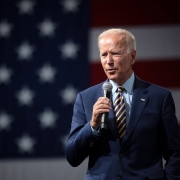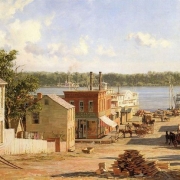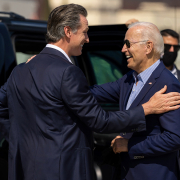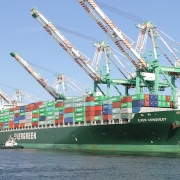How Biden Can Defeat China
In 1930, John Dos Passos wrote that America is many things: it is a “slice of a continent”, “the world’s greatest river valley”, and “a set of bigmouthed officials with too many bank accounts”. “But mostly,” he wrote in The 42nd Parallel, America “is the speech of the people”.
Almost a century later, America is still not confined to Washington, the Manhattan upper classes, or Silicon Valley oligarchs. America is still the American people — and that is a cause for some hope.
Yes, America is deeply divided and most Americans, with reason, fear the country is decaying both politically and economically. But overall, Americans are far more patriotic about their country’s virtues than in any European country. If the fight over the future of liberalism against China and Russia — a fight that now threatens to turn a cold war into a hotter one — is going to be won, it is here.
America’s cognitive elites may seem enamoured with China’s state-controlled political system, but for much of the country, this remains the land of Jefferson and Lincoln, not the Yellow Emperor. Despite the pandemic, new business formations rose from roughly 3.5 million in 2019 to 4.4 million last year. Self-employment, pummelled at first, has recovered more rapidly than conventional salary jobs; more than 500,000 Americans reinvented themselves as entrepreneurs.
Arguably the greatest test for American renewal lies in manufacturing, precisely the place China has based its ascendancy. Here Trump’s “America First” mantra is echoed in the demands of Biden’s progressive agenda: in just the past three months, Congress has passed The BuyAmerican.gov Act, The Make PPE in America Act, as well as recent legislation banning the import of good produced using slave labor in Xinjiang.
This is not only good policy but good politics; Americans, at least theoretically, are willing to pay higher prices for domestically produced goods; an overwhelming majority, according to one recent survey, would even fork out 20% more for products produced at home. No doubt this desire to reshore production reflects the pain associated with the mounting deficit on trade goods, which has enriched many of our leading manufacturing companies — notably Apple — but has also cost an estimated 3.4 million job losses since 2001.
That also goes some way to explaining why America’s industrial revival is occurring largely outside coastal affluent ‘mini-Europes’. Between 2017 and 2020, five states — Arizona, Texas, Oklahoma, New Mexico and Nevada — accounted for 30% of all manufacturing job growth. Perhaps more important is the fact that, along with reviving Midwest states like Ohio, Iowa and Indiana, these states tend to have lower taxes, housing costs and less regulation than their coastal counterparts.
And this formula is being rewarded. Almost all the new electric vehicle and battery facilities, demanded most by Democrat politicians, are being built east of the Sierra and Cascades. Meanwhile, multi-billion dollar facilities from Intel, Samsung and Taiwan Semiconductor are popping up in growth states such as Arizona, Texas and, most recently, outside Columbus, Ohio. The impact of such growth cannot be underestimated: thanks to these new technologies, American companies are able to produce better and often cheaper products, crafting parts that, in many cases, have been largely sourced in China and other countries.
This industrial renaissance is critical if the West is to address its ruinous dependence on China — made all too evident during the pandemic and the current supply chain crisis. And yet it is also likely to elicit opposition from our own largely pro-China elites, who seem more willing to appease rather than confront Beijing.
Read the rest of this piece at UnHerd.
Joel Kotkin is the author of The Coming of Neo-Feudalism: A Warning to the Global Middle Class. He is the Roger Hobbs Presidential Fellow in Urban Futures at Chapman University and Executive Director for Urban Reform Institute. Learn more at joelkotkin.com and follow him on Twitter @joelkotkin.
Homepage photo: Gage Skidmore, via Flickr under CC 2.0 License.

 Gage Skidmore, used under CC 2.0 License
Gage Skidmore, used under CC 2.0 License






